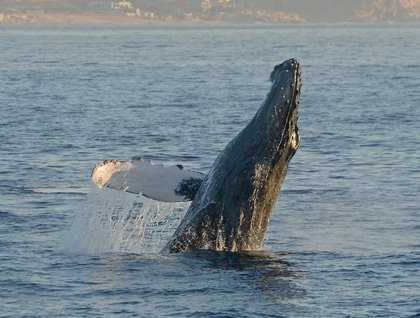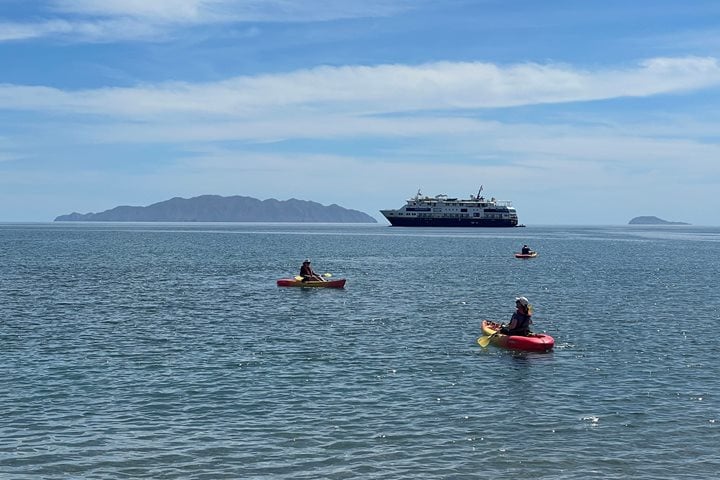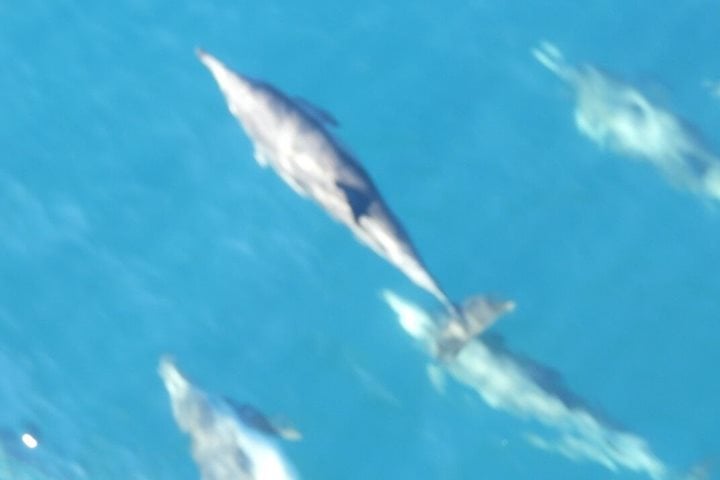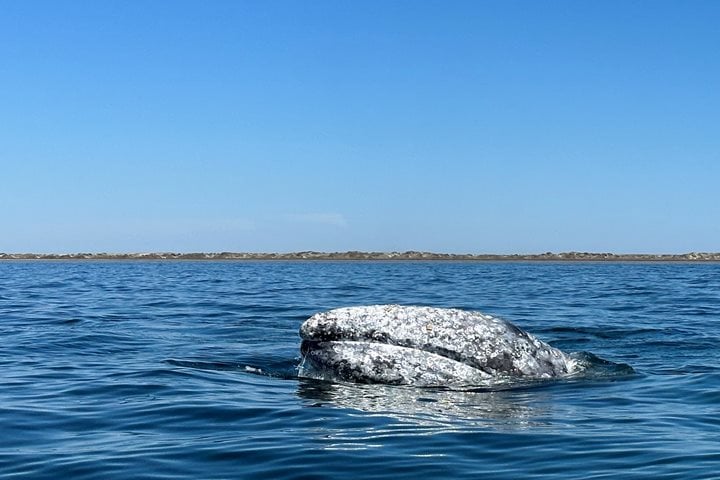A gentle rolling and a star-filled night describe our passage south to the very tip of the Baja California. Soon we rounded Land’s End and gazed upon Cabo San Lucas and a glacially sized cruise ship. Off in the distance a humpback whale breached and drew our attention to more natural sights. Finding a predictable animal gives quite an advantage to photographers when trying to get a shot of a 45-ton creature throwing itself into the air. This humpback breached about every two minutes as we passed and is featured in today’s Daily Expedition Report photograph. There are over one thousand humpbacks that breed and calve from here to the Mexican mainland and out to the Revillagigedo Islands south of Baja California. February is an excellent time to watch competitive groups of males in a variety of behaviors.
The new marina at San José del Cabo is large and well-organized. When complete it will have 430 slips that can accommodate yachts up to 180 feet long. To form the protected breakwater, construction crews moved 400,000 tons of granite blasted from a nearby quarry. This now provides a substrate for snowy egrets, great blue herons, cormorants, and ospreys to perch upon. We watched these species as we entered the sheltered harbor. After docking, we boarded buses bound for either an estuary that provides one of the best birding places on our trip or to head into town to visit shops and galleries, a glass blowing factory, and to stroll the pleasant streets lined with trees.
The San José River and estuary runs through the heart of the town and offers freshwater for migrating and resident birdlife. We spotted green, tricolored, and great blue herons in addition to great, snowy, and cattle egrets, a vermilion flycatcher, and the endemic gray thrasher. Overall, we discovered a total of 44 species for the morning.
Throughout the afternoon we cruised east and north from the Pacific into the Gulf of California. We saw a few humpbacks and another breach, but the wind and swells made it difficult to find more. The calving interval for most humpback females is two years. About 20% of the cows have a calf every year, and that provides incentive for males to follow and compete with other males for access to her. An hour later we found a cow and calf and two escorts. None of the group had shown itself for several minutes when suddenly, a male exploded completely out of the water in a tremendous breach higher than anyone had seen before. The photographers were taken so off guard that no one got a shot. Still, it was exhilarating to witness such a display.
We made our way north with a forward- and back-rocking motion as darkness closed in.







